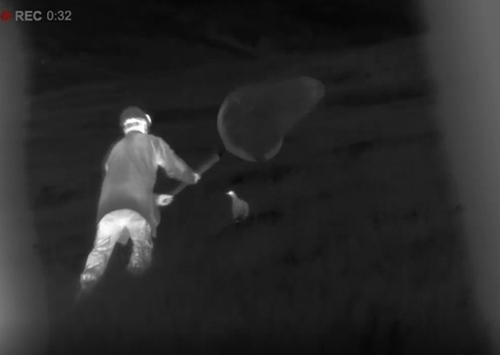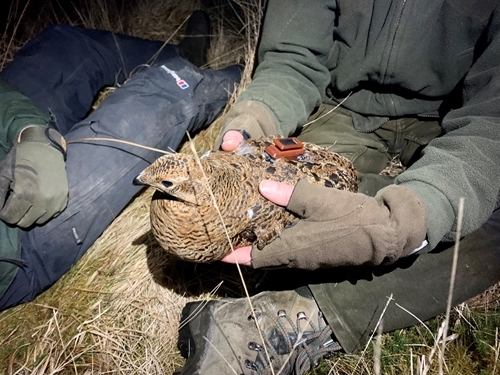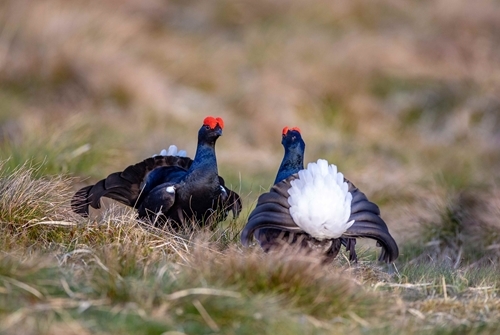By Holly Appleby and Molly Brown, Uplands Research
Black grouse were once numerous and widespread in England, yet over the last 150 years, the population has become increasingly isolated due to low breeding success, habitat fragmentation and changes in landscape configuration. The remaining birds have been restricted to the North Pennines, including parts of County Durham, Northumberland, Cumbria and the Yorkshire Dales, until now…
Last year, we translocated black grouse from the Durham Dales to the North York Moors as part of our Black Grouse Range Expansion Project, initially funded by Natural England’s Species Recovery Programme.


Following guidelines on reintroductions and translocations, we completed habitat suitability assessments to identify the best release areas where there is suitable connected habitat and gamekeepers who carry out predator control. We also identified donor moors in the core North Pennine range where the black grouse population is large, stable and genetically diverse. All donor moors were within a two-hour drive of the North York Moors, so the environmental conditions between the two are very similar.
In November, we caught and translocated 20 black grouse (10 male and 10 female) at night with the aid of thermal binoculars, lamps, and hand-held nets. Sixteen (eight males and eight females) were fitted with radio transmitters to allow us to follow their settlement patterns, survival and lekking behaviour.

We have visited the North York Moors on a weekly basis to locate the tagged birds using radiotelemetry equipment. Local residents, naturalists and land managers have also been great at sharing their sightings with us, leading us in the right direction. Initial visits over the winter showed that all birds settled in the vicinity of the release area, with some dispersal onto neighbouring valleys. Survival rates have been good, with only one juvenile male and one female having died.
In late March, we began searching for leks; display grounds where male birds, also known as blackcocks, exhibit a spectacular communal breeding system at dawn. On our first early morning visit, we returned to the release area where three males had been located using radiotelemetry. As we stepped out of the car, we heard a cacophony through the freezing fog. The bubbles, coos, and rasps got louder but we couldn’t see any birds due to the weather conditions. During a visit the following day under clear skies, views of puffed-up males with bright white fan tails confirmed the birds were lekking for the first time in living memory! Throughout April and early May we watched a total of five radio tagged males lekking across two different sites. The 3am starts were truly rewarding.

The information we are gathering by radiotracking will be used to determine the success of the translocation. This will help inform any further releases which may be needed to either reinforce the birds released initially, or to establish a new group of birds at a second recipient site later this year, helping to increase a network of inter-connected lekking groups.
This translocation of black grouse could not have been possible without the generosity of donor estates in the North Pennines, and the continuous habitat management and predation control on the North York Moors. We’d also like to thank Natural England for their Species Recovery Programme funding, the BASC Wildlife Fund, and those who donated to our Black Grouse Range Expansion Appeal.
Images copyright Emily Graham Media.